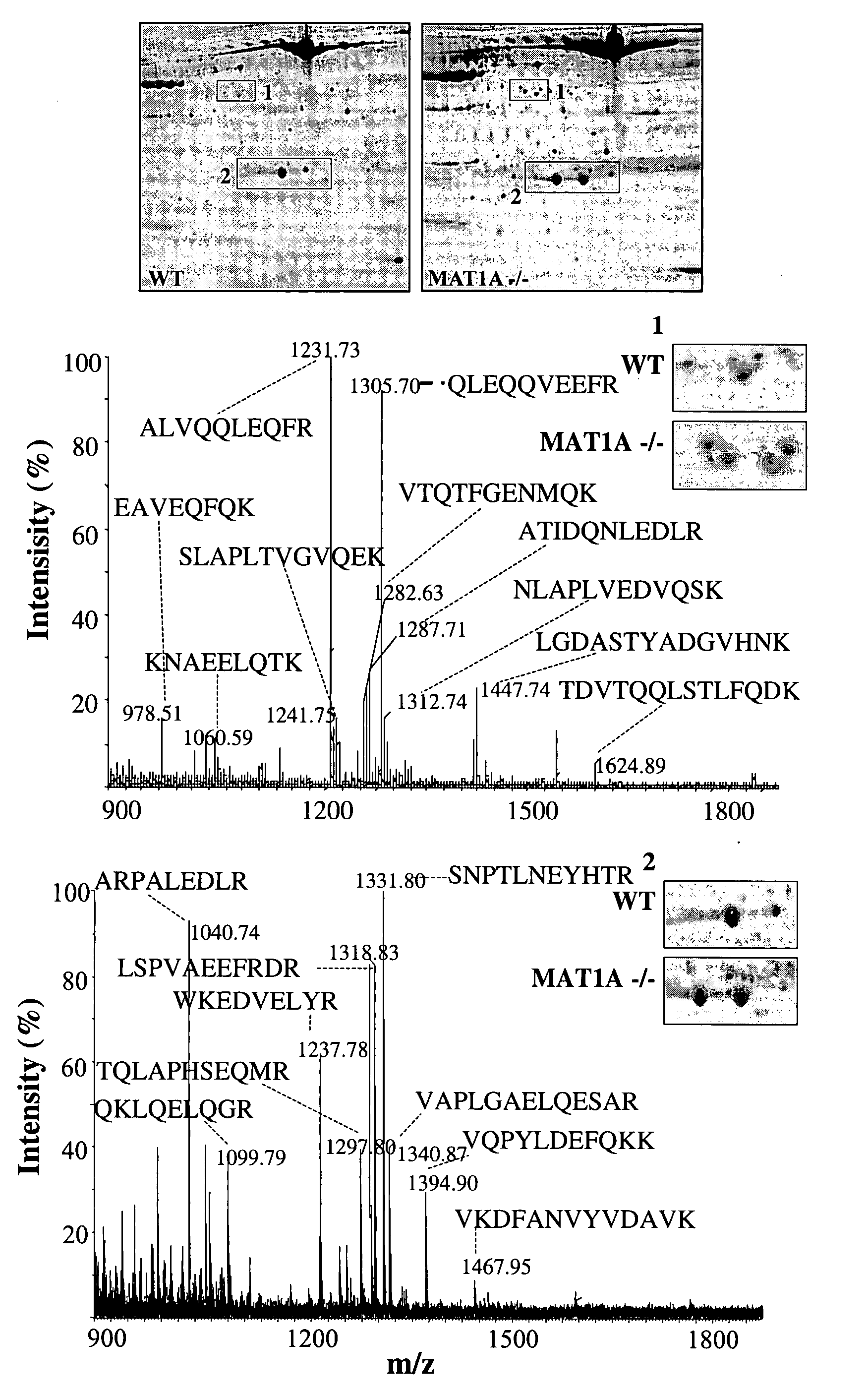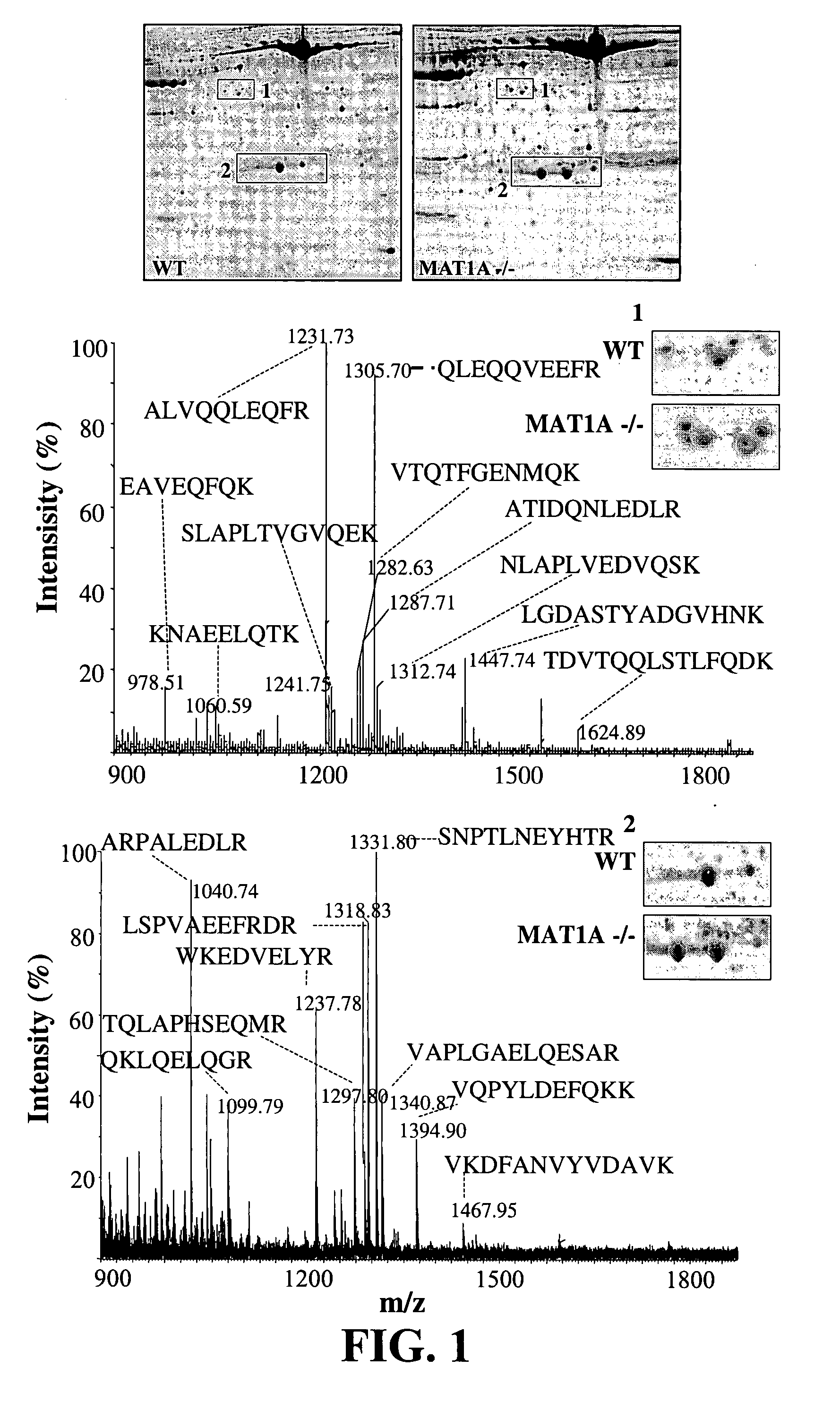Method for Diagnosing Hepatic Diseases
a hepatic disease and apolipoprotein technology, applied in the field of hepatic disease diagnosis, can solve the problems of poor hcc diagnosis, unfavorable clinical practice, and ineffective traditional techniques to diagnose hcc, such as the increase of alpha-fetoprotein (afp) levels, and achieve the effect of making the use of methodological complexity in clinical practice unthinkabl
- Summary
- Abstract
- Description
- Claims
- Application Information
AI Technical Summary
Benefits of technology
Problems solved by technology
Method used
Image
Examples
example 1
[0020] In this study, MATIA− / − mice were used, characterised by a chronic reduction in hepatic AdoMet enzyme, which induces the spontaneous development of non-alcoholic steatohepatitis (NASH) and cellular hepatocarcinoma at 18 months of age.
[0021] Serum samples were taken from control and MATIA− / − mice, 3, 5, 12, and 18 months of age, and were subsequently analysed by means of two-dimensional electrophoresis (2DE), followed by mass spectrometry. In this way, an average resolution of 500 proteins was obtained, and a differential comparison was conducted by means of PDQUEST, in which increases or decreases of at least two-fold were accepted as differences. Using this criterion, only two proteic bands were obtained from the serum of MATIA− / − mice, whose increase was consistent in all assays. Furthermore, these differences were observed starting with mice 3 months of age.
[0022] Analysis by means of PMF made it possible to identify these two increased proteic bands as apolipoprotein AI...
example 2
[0024] The levels and the post-translational state of Apo AI were studied in serum samples obtained from patients with different liver pathologies, including non-alcoholic steatohepatitis, alcoholic cirrhosis, HBV, HCV, and HCC. Four bands were identified as Apo AI by means of PMF (Peptide Mass Fingerprint) and de novo peptide sequencing in all the samples and 2D Western blot analysis. Through this study, pathology-specific alterations in the relative amount of Apo AI isoforms were detected. All the serum samples from patients with HBV and HCC showed a 2.5-fold increase in isoform 1, with respect to the controls (relative amount 41.93±3.00% as compared to 18.23±1.08% in control individuals) (FIG. 3).
[0025] Subsequently, the decision was made to analyse whether the increase in the acidic isoform of Apo AI was the result of an increase in the protein's oxidation state. The products of the tryptic digestion of Apo AI isoforms from three different patients suffering from HBV+HCC were a...
PUM
 Login to View More
Login to View More Abstract
Description
Claims
Application Information
 Login to View More
Login to View More - R&D
- Intellectual Property
- Life Sciences
- Materials
- Tech Scout
- Unparalleled Data Quality
- Higher Quality Content
- 60% Fewer Hallucinations
Browse by: Latest US Patents, China's latest patents, Technical Efficacy Thesaurus, Application Domain, Technology Topic, Popular Technical Reports.
© 2025 PatSnap. All rights reserved.Legal|Privacy policy|Modern Slavery Act Transparency Statement|Sitemap|About US| Contact US: help@patsnap.com



